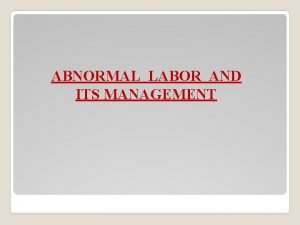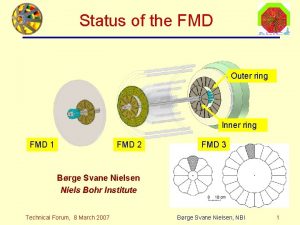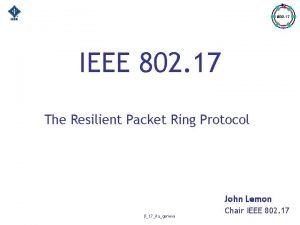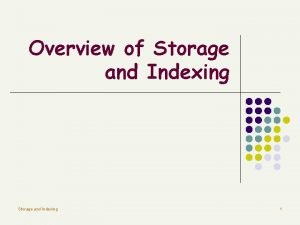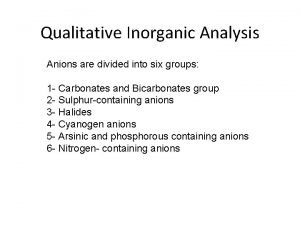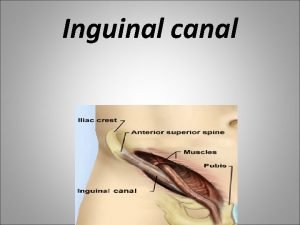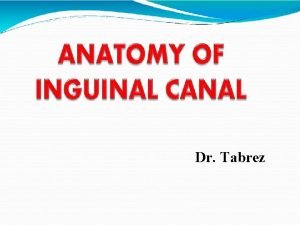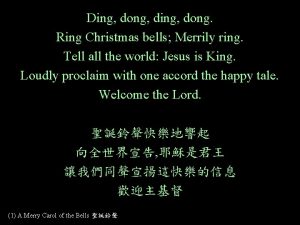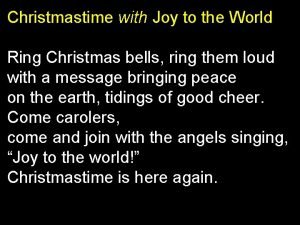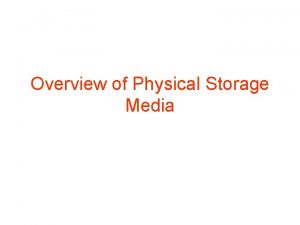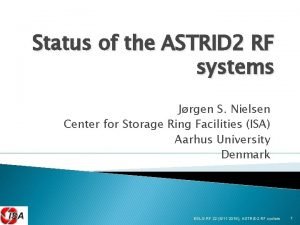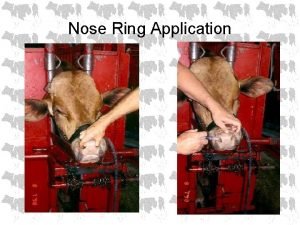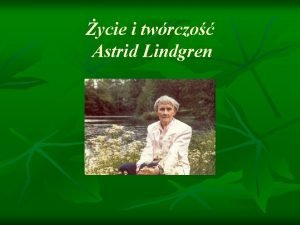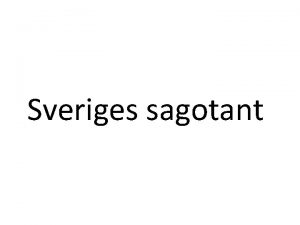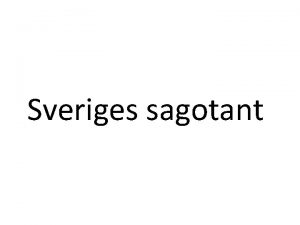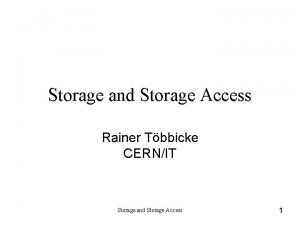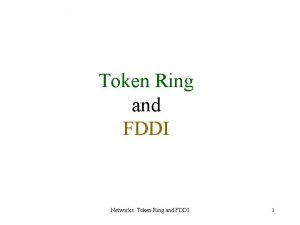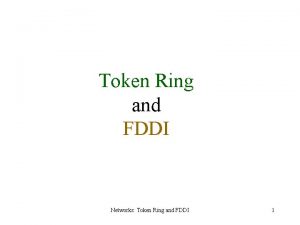An overview the ASTRID 2 storage ring and














- Slides: 14

An overview the ASTRID 2 storage ring and its RF system Jørgen S. Nielsen Institute for Storage Ring Facilities (ISA) Aarhus University Denmark ESLS-RF 13 (30/9 -1/10 2009), ASTRID 2 and its RF system 1

ASTRID 2 is the new synchrotron light source to be built in Århus, Denmark Dec 2008: Awarded 5. 0 M€ for ◦ Construction of the synchrotron ◦ Transfer of beamlines from ASTRID 1 to ASTRID 2 ◦ New multipole wiggler ◦ We did apply for 5. 5 M€ Cut away an undulator for a new beamline Has to be financed together with a new beamline Saved some money by changing the multipole wiggler to better match our need ESLS-RF 13 (30/9 -1/10 2009), ASTRID 2 and its RF system 2

ASTRID 2 main parameters ◦ ◦ ◦ Electron energy: Emittance: Beam Current: Circumference: 6 -fold symmetry 580 Me. V 12 nm 200 m. A 45. 7 m lattice: DBA with 12 combined function dipole magnets Integrated quadrupole gradient ◦ 4 straight sections for insertion devices ◦ Will use ASTRID as booster (full energy injection) Allows top-up operation ESLS-RF 13 (30/9 -1/10 2009), ASTRID 2 and its RF system 3

ASTRID 2 Layout ESLS-RF 13 (30/9 -1/10 2009), ASTRID 2 and its RF system 4

ASTRID 2 Layout ESLS-RF 13 (30/9 -1/10 2009), ASTRID 2 and its RF system 5

ASTRID 2 details General parameters Energy Dipole field Circumference Current Revolution time Length straight sections Number of insertion devices Lattice parameters Straight section dispersion Horizontal tune Vertical tune Horizontal chromaticity Vertical chromaticity Momentum compaction Coupling factor Synchrotron Radiation parameters Synchrotron radiation integrals Energy loss per turn Synchrotron radiation power Natural emittance Diffraction limit Characteristic wavelength Characteristic energy Horizontal damping time Vertical damping time Longitudinal damping time RF parameters Damped energy spread Damped bunch length RF frequency Revolution frequency Harmonic number RF voltage Overvoltage factor Quantum lifetime Synchrotron frequency ASTRID 2 0. 58 1. 192 45. 704 200 152. 45 ~3 4 ASTRID 0. 58 1. 6 40. 00 200 133. 43 0 5. 23 2. 14 -6. 4 -11. 2 0. 0107 5% 2. 7 2. 29 2. 69 -4. 0 -7. 1 0. 068 5% I 1 [m] I 2 [m-1] I 3 [m-2] I 4 [m-2] I 5 [m-1] U 0 [ke. V/turn] P 0 [k. W] 0. 488182 3. 870433 2. 384181 -1. 457685 0. 130774 6. 2 12. 1 38 -101 4. 6 267 20. 7 28. 6 17. 6 2. 7164 5. 2016 4. 3060 1. 8615 0. 9363 8. 3 1. 6 140 1759 3. 5 358 29. 1 18. 7 7. 9 σE/E [0/00] [cm] [MHz] 0. 433 2. 2 104. 950 6. 56 16 50 8. 1 ∞ 10 0. 416 6. 5 104. 950 7. 5 14 30 4 ∞ 20. 6 E [Ge. V] B [T] L [m] I [m. A] T [ns] [m] Qx Qy d. Qx/d(Δp/p) d. Qy/d(Δp/p) αp εH [nm] λc [nm] εc [e. V] τh [ms] τv [ms] τs [ms] h [k. V] q υ=Ω/2π [k. Hz] 1 ESLS-RF 13 (30/9 -1/10 2009), ASTRID 2 and its RF system 6

ASTRID 2 lattice ESLS-RF 13 (30/9 -1/10 2009), ASTRID 2 and its RF system 7

ASTRID 2 Status Sep. 2009: Order of ◦ Magnets on girders for the synchrotron Dipoles, Q-poles, Sextupoles, correctors ◦ Fast magnets with power supplies Extr. Kicker, fast bumpers, inj. Septum Timeline ◦ ◦ -2010: Design and order remaining items 2011: Build and commission synchrotron 2012: First beamlines on ASTRID 2 2013: All beamlines transferred to ASTRID 2 ESLS-RF 13 (30/9 -1/10 2009), ASTRID 2 and its RF system 8

ASTRID 2 RF 105 MHz (like ASTRID) Main RF parameters ◦ ◦ ◦ Harmonic: RF voltage: Synchrotron frequency: Synchrotron radiation power: Cavity power: 16 50 -150 k. V 10 -17 k. Hz ~1. 4 k. W 0. 8 -7 k. W 10 k. W tube-based FM transmitter (triode) ◦ Tube-based FM transmitters are Cheaper More robust ESLS-RF 13 (30/9 -1/10 2009), ASTRID 2 and its RF system 9

ASTRID 2 Cavity Collaboration with MAX-lab ◦ MAX-lab needs 8 cavities (100 MHz) for MAX IV We need 2 cavities (105 MHz) (a spare for ASTRID 1) ◦ New MAX-lab cavity Based on MAX II cavity Use Electron Beam Welding instead of vacuum brazing Proposal: Have industry build after MAX-lab RF design ◦ MAX-lab will also build a 300 MHz Landau cavity ESLS-RF 13 (30/9 -1/10 2009), ASTRID 2 and its RF system 10

New ASTRIDx LLRF We will need a new LLRF for ASTRID 2 The present ASTRID LLRF is ◦ Old, Analog Risk of failure, not easy to repair/maintain We are seeking a solution which is ◦ Simple (we have limited resources) ◦ Adequate Two possibilities ◦ Fully digital: Direct digital sampling of down converted signals Others achieve 0. 1% stability ◦ Analog down conversion to baseband Digital control of baseband signals Stability: ~1% ESLS-RF 13 (30/9 -1/10 2009), ASTRID 2 and its RF system 11

ASTRIDx LLRF (proposal) Digital control of baseband signal ◦ Either with IQ modulators and demodulators or with amplitude and phase ◦ A computer (PC) running Lab. VIEW Real-Time with FPGA equipped multifunction card to measure and control the baseband signals NI PCIe-7851 R/7852 R: Virtex 5 FPGA, 8 AI, 750 k. S/s/ch, 8 AO, 1 MS/s/ch, 16 bit PID Loop rates in excess of 100 k. Hz Cavity fill time has a 3 d. B point at 6 k. Hz We believe this solution is ◦ Simple, but adequate ◦ Flexible ◦ Allows easily integrated diagnostics ESLS-RF 13 (30/9 -1/10 2009), ASTRID 2 and its RF system 12

ASTRIDx LLRF proposal Master oscillator 104. 95 MHz Attenuator/ gain DM 1 DM 2 -33 – +25 d. B Phase shifter -180° – +180° optional Fast feedback loop Pre. Amp +40 d. B, 10 W Combiner Atten- FM transmitter +36 d. B, 10 k. W Phase nuator shifter -5 – -55 d. B -180° – +180° Dx Splitter adc. Cav. I adc. Cav. Q dac. Plunger MO adc. FPWI adc. FPWQ adc. RPW Dx MO adc. MOlevel dac. A dacφ RF splitter Rohde&Schwarz SMY 01 or DDS Realtime computer with IO (e. g. PC (or an NI Compact RIO) with Lab. VIEW Real. Time) ESLS-RF 13 (30/9 -1/10 2009), ASTRID 2 and its RF system 13

Conclusions Have shown you ◦ The new ASTRID 2 SR source ◦ The RF system for ASTRID 2 ◦ Proposal for new ASTRIDx LLRF Would appreciate feedback on our ideas ◦ Analog system (digital control of baseband signals)? ◦ Fully digital system with fast sampling of down converted signal? Do we need the higher stability? ESLS-RF 13 (30/9 -1/10 2009), ASTRID 2 and its RF system 14
 Strong no in c
Strong no in c Inner ring and outer ring
Inner ring and outer ring Token ring and resilient packet ring
Token ring and resilient packet ring Overview of storage and indexing
Overview of storage and indexing Anions
Anions Oblique canal
Oblique canal Inguinal region
Inguinal region Ding dong, ding dong christmas bells are ringing
Ding dong, ding dong christmas bells are ringing Ring christmas bells ring them loud
Ring christmas bells ring them loud Overview of physical storage media
Overview of physical storage media Transferring of data from auxiliary storage to main storage
Transferring of data from auxiliary storage to main storage Primary storage and secondary storage
Primary storage and secondary storage Uses rigid metallic platters
Uses rigid metallic platters Object based and unified storage
Object based and unified storage Tomco rf
Tomco rf
